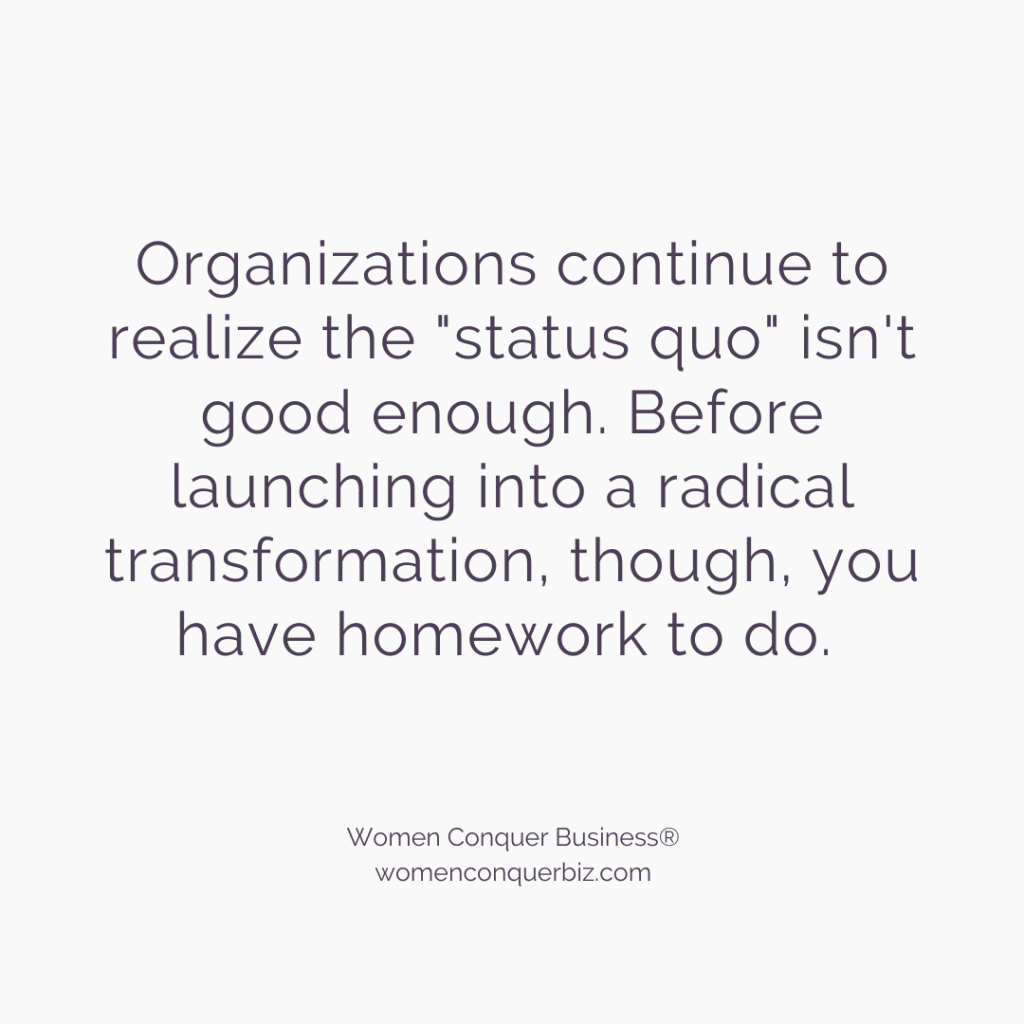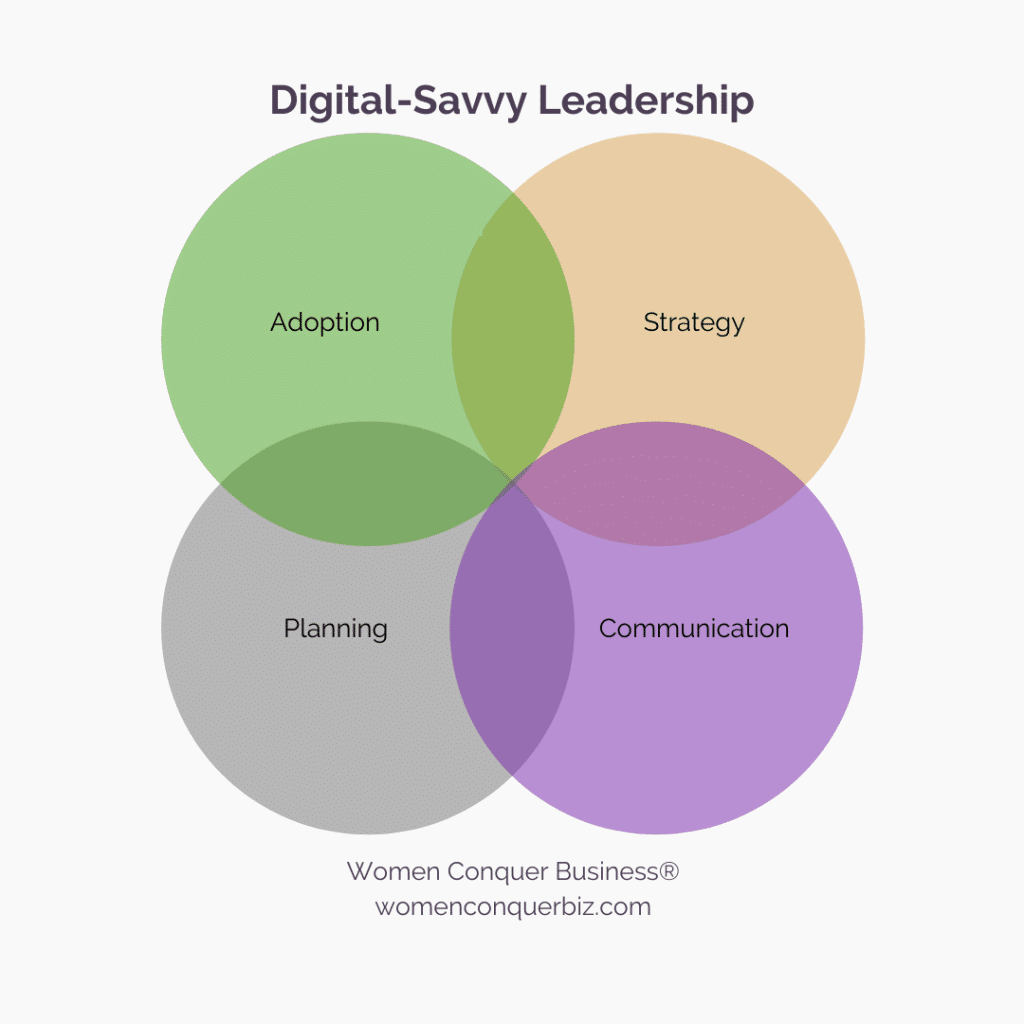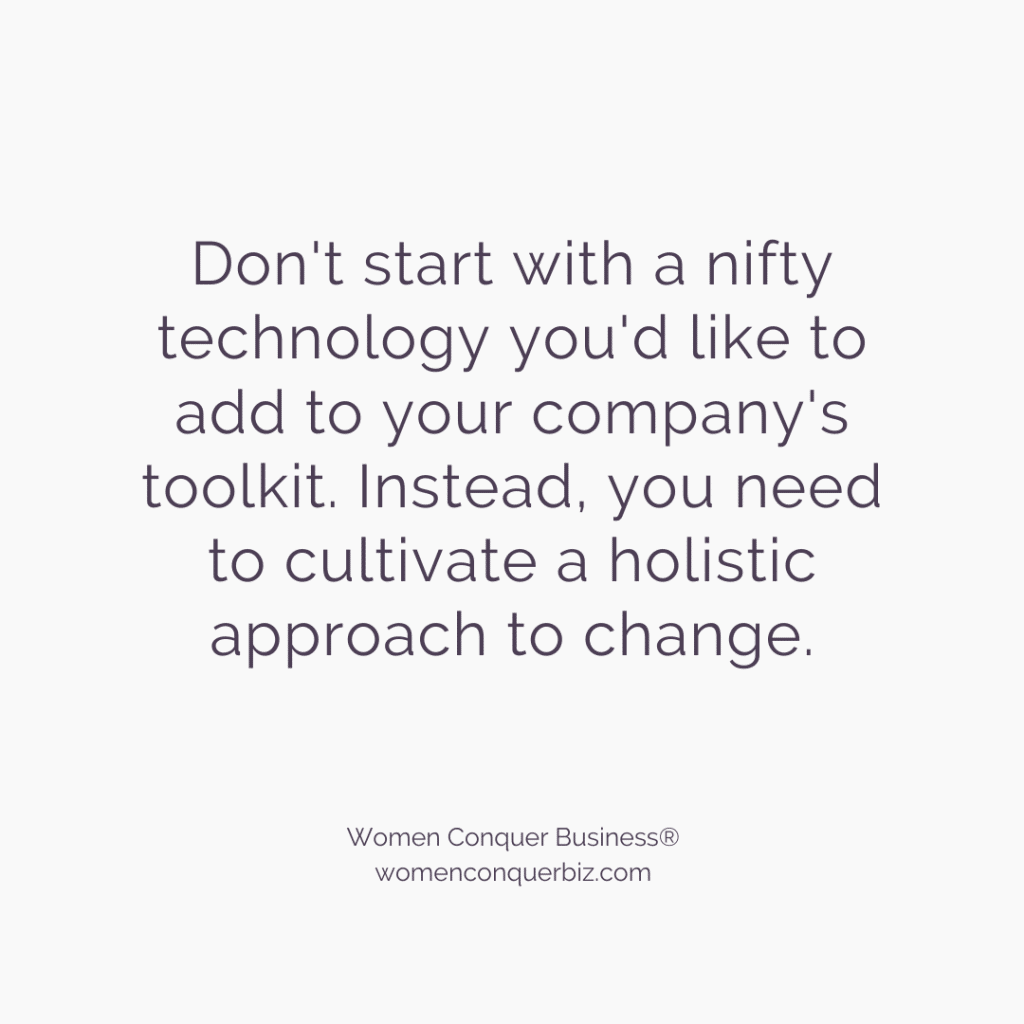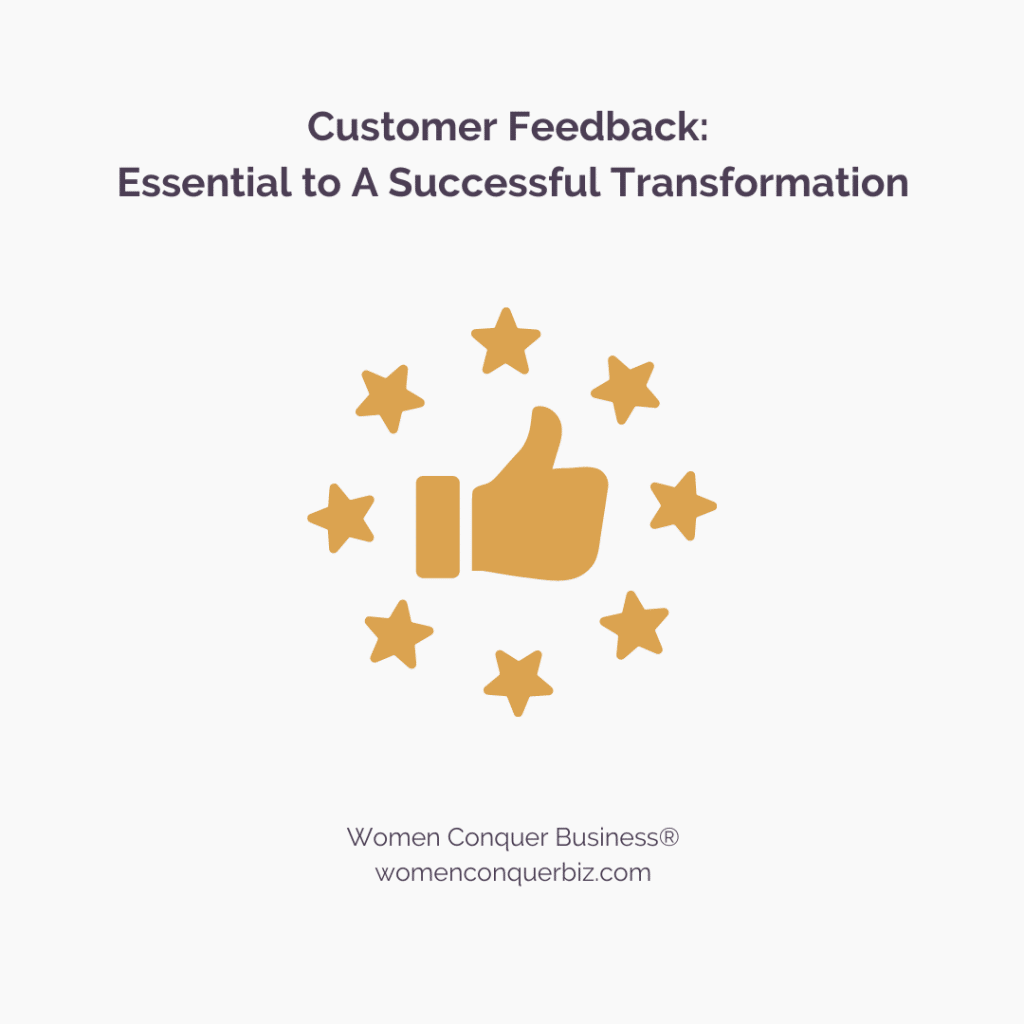The pandemic has radically changed how we do business.
Organizations continue to realize the “status quo” isn’t good enough. They’re looking for ways to survive and thrive. For many companies, successful digital transformation strategies remain top of mind.
Before launching into a radical transformation, though, you have homework to do. Assess what customers love most about your company. Take a look at the areas where you slay the competition.
Why? So you can incorporate these successes into your future plans.
A measured approach to digital transformation will help you avoid throwing the baby out with the bathwater. Let’s discuss ways to take a more holistic approach when it comes to digital transformation efforts.
Trusted Marketing Advice
SIGN UPSuccessful Digital Transformation Strategies
A 2019 survey of CEOs, senior executives, and directors revealed digital transformation risk as their number one concern. And business leaders have put their money where their mouths are when it comes to this concern.
In 2018 alone, a purported $1.3 trillion was spent on digital transformation efforts. Shockingly, 70 percent of these initiatives failed to reach their business goals. This contributed to an estimated $900 billion in waste. Talk about a digital transformation failure rate!
What makes the difference between a successful digital transformation and one that leads to graft?
It’s about more than adopting new tech. It starts with a shift in company mindset. There’s no better way to doom digital transformation than passing it off to your CIO and tech staff.
How do you avoid digital transformation pitfalls? You need digital-savvy, resilient leadership. This leadership must recognize that small changes often prove transformative.

Digital Transformation Starts with Leadership
You also need a clear understanding of the fact digital transformations don’t occur in a vacuum. To achieve success, they require:
- Adoption
- Planning
- Strategy
- Communication within the organization and outside as well
Most digital transformations provide little beyond possibilities for efficiency gains. The same goes for improved customer experience. These initiatives don’t come with the shift in mindset necessary to make them work.
They come burdened with current organizational practices that are flawed. What many business leaders fail to realize is that digital transformation magnifies these flaws.

A Winning Framework
Now, you’ve got a better sense of the major pitfalls that often plague companies during a digital transformation. Let’s explore practical, actionable ways to avoid these issues. Strategies that we’ll cover in this section include:
- Sorting out your business strategy before investing in anything
- Starting with the talent you’ve got
- Revolutionizing customer experience with an inside-out approach
- Addressing employee fear associated with change
- Encouraging agile decision making
Each of the steps will help you navigate a better transformation. One that makes sense for your company and customers. Here’s how to best leverage this framework to your advantage.
Sorting Out Your Business Strategy Before Investing in Anything
Digital transformation isn’t an issue fixed with money alone. This approach leads to expensive catastrophes.
What sets digital-savvy leaders apart from the pack? They aim to enhance organizational performance through the strategic application of specific technologies. In this way, they yield measurable goals.
Some leaders start with a specific tool they feel their company needs. This might be a machine learning strategy. How do leaders objectively measure the success of applying it? They can’t without understanding its broader business strategy implications.
Don’t start with a nifty technology you’d like to add to your company’s toolkit. Instead, you need to cultivate a holistic approach to change. Consider overarching company themes such as:
- Digitization
- Speed
- Innovation
Use these guiding themes to identify areas where specific changes can be made. This might be increased speed-to-market. Or, it might involve reduced production lead times.
You may also wish to consider the improved application of data in the global supply chain.
These issues can then be used to define clear, measurable goals. After these concrete objectives are determined, you’ll be well placed to find the right digital tools to effect positive outcomes. And you’ll have also laid the groundwork for evaluating progress.
This strategy will allow you to designate the right combination of tools for your organization. It will also prevent you from spending unneeded money as well as keep you focused on achievable outcomes.

Leverage Your Talent
As we’ve already alluded to in this article, digital transformation doesn’t have to be all-encompassing and completely transformative. After all, you don’t need to fix what isn’t broken.
Oftentimes, small changes come with big positive outcomes. This shift in mindset also demands you evaluate company talent before hiring outside. Why hire an army of outside consultants when you can leverage insiders?
And don’t assume you’re settling for less by taking a more surgical approach to transformation. After all, big consulting firms offer a one-size-fits-all approach that may benefit your company very little.
By relying on staff and those intimately involved with daily processes, you have a better chance of digital transformation that’s highly impactful. After all, your employees already have a much better idea of what is and isn’t working in your company.
A great place to start is by taking a look at your current workflow and then finding ways to streamline it with specific digital tools. This approach is vital to positive change.
In the vast majority of cases, new technologies fail to improve organizational productivity because insider knowledge has been ignored. Don’t let this happen to you!
Revolutionize Customer Experience With an Inside-Out Approach
Company leadership typically cites customer intimacy and satisfaction as two primary motivators for digital transformation. To have the right level of impact, then, your transformation needs to start with in-depth input from consumers.
To do this, ask customers to rate your company’s strengths and weaknesses. The answers they provide will prove invaluable to positive transformation.
But don’t stop there, you should also hold focus groups where your various stakeholders are present. During these focus groups, identify stakeholder needs and priorities. Then, rate your company’s current performance based on these evaluation metrics.
By starting with a deep-dive into the internal workings of your company, you’ll be better positioned to develop meaningful goals and identify the tools to get you there. Don’t fall into the trap of assuming a single app or tool will solve all your customer service issues.
Instead, focus on smaller-scale changes to different tools at different points of the service cycle to maximize customer experience.

Address Employee Fears
Digital transformation can be perceived by employees with trepidation. After all, technology has a long-standing track record of replacing employees. Often with inferior, although cheaper, results.
As a result, you need to empathize with your employees when it comes to the fears that they may have associated with digital transformation. If employees feel that this process could impact their job, they’ll unconsciously resist change.
This unconscious decision to stand in the way of progress is understandable, but it can also lead to counterproductive results. As a business leader, it’s critical that you emphasize digital transformation as a catalyst for new opportunities.
Make it clear to them that the process represents a means for upgrading their expertise to suit the marketplace of the future. Encouraging this type of company culture will guarantee your digital transformation proceeds more smoothly.
It’s a win-win for you and your employees.
Encourage Agile Decision Making
Agile decision making is another area where many companies need to improve. That comes with rapid prototyping and flat structures. Yet, the uncertainty that comes with digital transformation often has the opposite effect on companies.
Like a deer in headlights, many company leaders dive into the process of change and lose their focus and “why” along the way. When this happens, decision making can slow to a crawl.
Consider creating cross-functional teams to help drive agile decision making. These teams should head up different stages of your digital transformation. Because of their flat structure, they should excel at presenting ideas and obtaining input from company leaders.
This structured approach will lead to more efficient decision making overall, in a fraction of the time.
Unlocking Success with Digital Transformations
What distinguishes successful companies from the competition when it comes to successful digital transformation? The digital transformation strategies outlined above.
You’ll also need to cultivate a willingness among leaders to start with the fundamentals. Namely, focusing on the mindest of their employees and encouraging a positive shift.
Create an organizational culture where processes and goals are developed before the identification of appropriate digital tools to achieve change.
Why? Only by empowering stakeholders, employees, and customers to envision a better future for your company can you drive effective digital transformation. Otherwise, you’re letting technology dictate your company’s future, which is a recipe for disaster.
Are you ready to unlock more strategies designed for growth? Contact us today to discuss your digital transformation goals and how to get there.

Ready for ongoing support?
Join us in the Strategic Marketing Membership where we offer events, coaching, and accountability.








